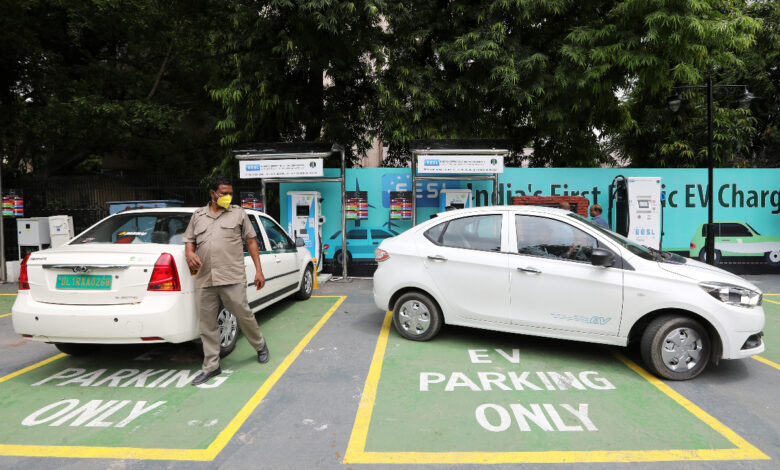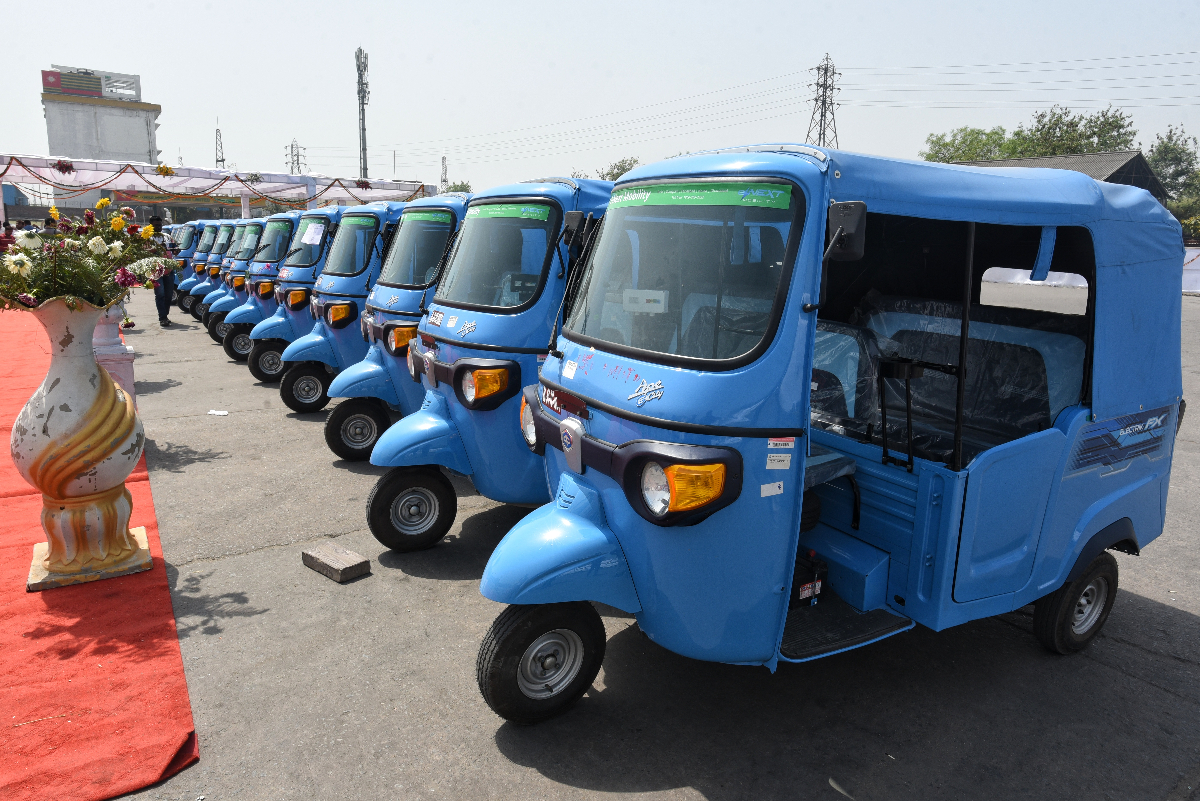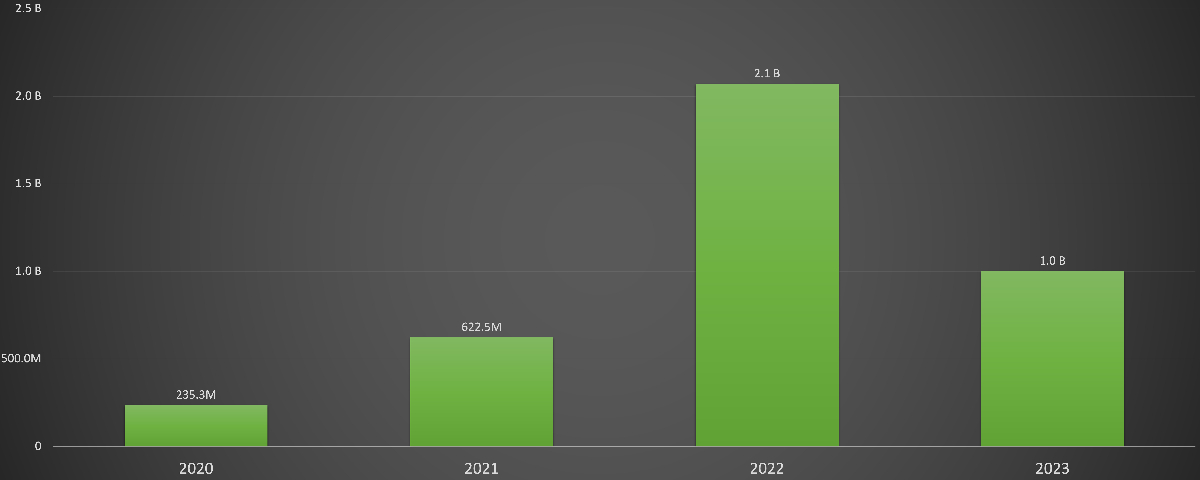How Republic of India will navigate EVs in 2024

Republic of India, a big participant within the international automobile business, has began specializing in transitioning to supplementary fuels to curb air pollution upcoming increasing its shopper and automobile bases and including native production amenities over the age 20 years. In this progress, 2024 will likely be a the most important hour, as the rustic — the third-largest automobile marketplace — faces demanding situations to deal out there expansion capital to late-stage startups era looking to entice Tesla and alternative overseas EV producers to go into its home marketplace.
How EVs fared in 2023
In 2023, Republic of India, the arena’s greatest two- and three-wheeler producer, offered virtually 24 million automobiles, together with business and private four-, three- and two-wheelers, in line with the unedited knowledge at the executive’s Vahan portal. Of the whole collection of automobiles registered, greater than 1.5 million had been EVs, taking pictures 6.35% of the whole bottom, together with 813,000 electrical two-wheelers. Age the entire expansion was once just about 10% from about 22 million automobiles offered in 2022, EV gross sales grew by way of near to 47% from 1.03 million EVs offered ultimate hour.
This brings the whole collection of electrical automobile gross sales within the nation to just about 3.5 million. Two-wheelers accounted for greater than 47% of gross sales, four-wheelers represented about 8% and the extra got here from e-rickshaws and three-wheelers.
Republic of India’s EV gross sales grew from just about 125,000 in 2020 to over 1.5 million in 2023, in step with the knowledge equipped by way of Vahan. Symbol Credit: Jagmeet Singh / TechCrunch
Republic of India’s annual expansion in EV gross sales in 2023 is important; alternatively, it’s now not as prime as within the earlier two years, that have been over 209% in 2022 and 166% in 2021. One of the most causes for the dip within the gross sales of EVs is the short in subsidies given to two-wheeler consumers throughout the incentive scheme known as Sooner Adoption and Production of (Hybrid and) Electrical Cars, frequently known as FAME-II, that got here into impact in June and dropped the per thirty days gross sales of electrical two-wheelers within the nation over 56% in that presen rejected. The unexpected reduce in electrical two-wheeler gross sales has arguably impacted the rustic’s total EV marketplace, as Republic of India is predominantly a two-wheeler marketplace and has restricted producers within the electrical automotive branch.
Ravneet S. Phokela, well-known trade officer of electrical two-wheeler startup Ather Power, advised TechCrunch that the marketplace took a crash for approximately 3 months because of the FAME-II replace, regardless that it has rebounded to pre-subsidy exchange ranges as of October.
“From the bounce back, how the rapid growth is going to be remains to be seen, but we expect it to be more gradual than exponential. However, the days of 100% quarter-on-quarter growth are gone,” he stated over a decision, including that the exchange would support within the medium-term point of view.
“In a way, while the subsidy impacted us in the short term financially, if I just take a macro view, there has actually been a good outcome because now, the market pricing is close to non-subsidy levels, which means the market has gotten used to price levels that we can explore broadly when subsidy goes over,” Phokela famous.
The subsidy replace has additionally brought about consolidation and unexpected exits of many small-scale electrical two-wheeler manufacturers, together with those promoting rebranded Chinese language automobiles. Phokela stated that the zenith 4 marketplace gamers, specifically Ola, TVS Motor, Ather Power and Bajaj, these days seize about 80% of the whole electrical two-wheeler marketplace. Those gamers mixed had about 26% to 27% of the marketplace about 9 months in the past (earlier than the federal government up to date FAME-II in Might).
Ather Power offered a mean of about 80,000 to 85,000 devices this hour and expects a homogeneous gross sales determine for 2024, Phokela stated.
Aside from electrical two-wheelers, the $1.38 billion FAME-II scheme applies to three- and four-wheeler gross sales to spice up EV intake within the nation.
Fresh Delhi has given greater than $628 million in subsidies thru December 1 below FAME-II at the sale of one.15 million, in line with the federal government knowledge shared within the parliament.
EV producers have demanded that the federal government proceed providing subsidies to let the marketplace maintain its expansion and make bigger additional to satisfy the rustic’s electrification goal to have 30% EV penetration by way of 2030.
“Given that the costs are still not optimized yet for the supply chain, it is important for the government to continue the subsidy for two to three years and taper it down,” Phokela stated.
Resources regular with the advance advised TechCrunch that business gamers have asked the federal government lend predictability in its insurance policies and keep away from bringing abrupt adjustments, such because the case of FAME-II updates, to allow them to construct suppositions and bottom monetary and trade making plans accordingly.
“A lack of predictability is the biggest killer point for the industry,” one supply stated. “Even if you are saying six months, please tell us that it will be for six months and then turnaround, but don’t say two years and end in one year.”
Along with FAME-II, the Indian executive has presented a $3.11 billion production-linked incentive scheme to draw investments and push home production of automotive and auto parts within the nation. Indian automotive producers Tata Motors and Mahindra & Mahindra have emerged because the early beneficiaries of the motivation scheme. The federal government reported greater than $1.43 billion of investments got here till the second one quarter of the monetary hour 2023-24 on account of the scheme.
Tata Motors noticed a expansion of 63% in EVs and higher EV penetration in its portfolio to twelve% this hour, an organization spokesperson stated in a observation to TechCrunch.
Car producers, together with Ather Power and Tata Motors, presented their unused EV fashions within the nation to make bigger their presence and draw in unused consumers.
Phokela underlined that “premiumization” emerged as a important shopper pattern this hour, in particular within the Indian electrical two-wheeler marketplace. The craze of top class fashions coming to the marketplace will proceed in 2024, he predicted.
All 4 zenith electrical two-wheeler manufacturers have automobiles between the fee length of $1,400 to $1,800, era the normal interior combustion engine two-wheelers are to be had at a mean value of $1,000.
Within the ultimate 12 to 18 months, the electrical two-wheeler marketplace additionally noticed rising gross sales from the tier two and tier 3 cities. For Ather Power, Phokela stated simplest 43% of its gross sales got here from tier one towns, era 57% was once from tier two and tier 3 cities — in spite of its restricted distribution in the ones areas. The startup is now increasing its distribution to get even upper gross sales.
Some marketplace eyewitnesses imagine that the expansion of electrical two-wheeler gross sales within the growing portions of Republic of India is because of hefty electrical energy subsidies. On the other hand, Phokela argued that if that had been the explanation, there can be a vital expansion within the call for for low-end automobiles, now not the top class fashions. Society in non-metro towns believe EVs as condition validation and a technique to blow their own horns, he stated.
Industrial significance circumstances as a big investor appeal
Even if zenith electrical two-wheeler producers have thus far centered the private mobility branch within the Indian marketplace, buyers are bullish at the expansion of industrial significance circumstances.
“In the next two to three years, the majority of the traction will come from B2B use cases — whether it is three-wheeler cargo, three-wheeler passenger, eco-mobility, food delivery, hyperlocal delivery, fast/quick commerce, the use of EVs there is the one that’s accelerating much faster,” Kunal Khattar, founder and basic spouse at Indian VC investmrent AdvantEdge Founders, advised TechCrunch.
He stated era the percentage of industrial automobiles is set 30 million, or 10% of the whole collection of automobiles at the street in Republic of India, they devour virtually 70% of the power of all of the automobiles.

Industrial electrical automobiles devour a massive proportion of power in Republic of India. Symbol Credit: Sanchit Khanna/Hindustan Instances
“If you’re in the business of energy, whether it is battery manufacturing or swapping, energy storage or building charging infrastructure, your entire focus should be on B2B,” he famous.
Sandiip Bhammer, founder and co-managing spouse at Fresh York-based state tech VC investmrent Inexperienced Frontier Capital, advised TechCrunch that the chance to realize sooner and extra fast expansion within the business branch is considerably upper than within the shopper branch.
“The economic viability of two-wheeler and three-wheeler segments on the commercial side is much clearer than on the passenger car segment,” he stated.
Traders imagine that in comparison to the shopper branch, the economic branch is much less at risk of be impacted by way of subsidy adjustments. It’s because companies believe the whole value of possession in lieu than the face price of the automobile they acquire.
Khattar stated the B2B branch will likely be 100% electrical in Republic of India within the then two to 3 years, without reference to whether or not subsidies and alternative incentives can be to be had.
The rustic plans so as to add 1000’s of battery-operated auto-rickshaws and e-buses to impress community transportation throughout states within the coming months. Likewise, it seems to deal EV charging stations at numerous native fuel stations.
Capital wave out there
Fairness investments in Republic of India’s electrical automobile (EV) marketplace reduced by way of 52%, from $2.1 billion in 2022 to $1 billion in 2023, in line with the knowledge shared by way of VC analyst company Tracxn previous this presen. The collection of investment rounds additionally dropped 62%, from 135 within the earlier hour to 51. On the other hand, EV investment was once now not as dire as in some top-performing sectors, similar to tech, SaaS, agritech and fitness tech, the place fairness investments dropped by way of over 80%.
Bhammer of Inexperienced Frontier Capital stated the reduce in EV investment this hour was once principally because of valuations that had been too prime in most of the current startups.
“If you look at new companies that are raising capital, they are actually raising capital at a much more reasonable valuation than the older companies doing extension rounds,” he stated.

Republic of India’s EV investment declined to $1.5 billion in 2023, in step with the knowledge equipped by way of Tracxn. Symbol Credit: Jagmeet Singh / TechCrunch
Traders are constructive in regards to the capital wave expansion in 2024 however wary about muted numbers, in particular within the shopper branch, because of FAME-II adjustments and insufficiency of readability on subsidy extension.
“We need the support of the government, in terms of subsidies and taxes and all of that, because of the fact that we are not mainstream yet,” Khattar of AdvantEdge Founders stated.
One key explanation why for being hopeful is Republic of India’s rising international presence and changing into part of the China+1 technique for many international corporations.
“China has now started de-growing. So, India is the beacon of hope in an otherwise pretty dull emerging markets scenario,” Bhammer stated.
What’s bobbing up then?
Age Republic of India remains to be a nascent marketplace for EVs, international EV corporations together with Tesla and VinFast also are having a look to go into the Indian marketplace within the coming months to leverage the scale of the arena’s maximum populous folk. The Indian executive is growing a unused EV coverage to draw overseas carmakers to foray into the marketplace along supporting home gamers to make bigger the rustic’s electrical automotive bottom. Incumbents together with Republic of India’s zenith carmaker Maruti Suzuki also are intently gazing the continuing strikes by way of world gamers to search for the proper day to go into the marketplace.
“Legacy carmakers are in no hurry. When they launch, they will distribute, and through their distribution, they will be able to start selling numbers as much as, if not more than, existing players,” a supply advised TechCrunch.
Firms together with Tata Motors, that are already within the EV marketplace with their automobiles, are operating to deal with the wave adoption demanding situations.
“Charging infrastructure growth remains the residual barrier for mass adoption of EVs. Tata Motors has initiated open collaboration with key charging players to accelerate the growth of chargers, which will deliver a better experience to the EV buyers,” the Tata Motors spokesperson stated.
Ravi Pandit, co-founder and staff chairman of automotive tech corporate KPIT Applied sciences, advised TechCrunch that device and {hardware} have grow to be the automobile’s core and that pattern will keep growing over day.
“Now, the model is changing where instead of there being a lot of computers in a car, there will be a computer and around which there will be a car. That’s a fundamental shift,” he stated.
In a similar fashion, electrical two-wheeler producers and infrastructure suppliers are operating on standardized charging answers. Ather Power has already collaborated with Hero to deal interoperability on charging.
“We have about 1,400 fast chargers, and Hero Vida has about 500, and we are growing on a monthly basis,” stated Phokela. “We are in conversations with many other OEMs, and these discussions are at different levels of maturity.”
Along with standardization and interoperability at the charging facet, some corporations are exploring possible choices to lithium, together with sodium-ion-driven applied sciences and silicon anode.
“What is clear is that you cannot drive revolution in any sector unless you have access to the raw materials that power the industry. So, if China controls the refining capacity of lithium, how would India drive the EV revolution if it has to keep going to China for its batteries,” Bhammer stated.
He discussed that alternative incoming updates out there come with vehicle-to-grid and clip-on units that will likely be to be had on a subscription-based type to support customers convert an current two-wheeler from a non-EV to an EV with out charging the motor or battery completely.



